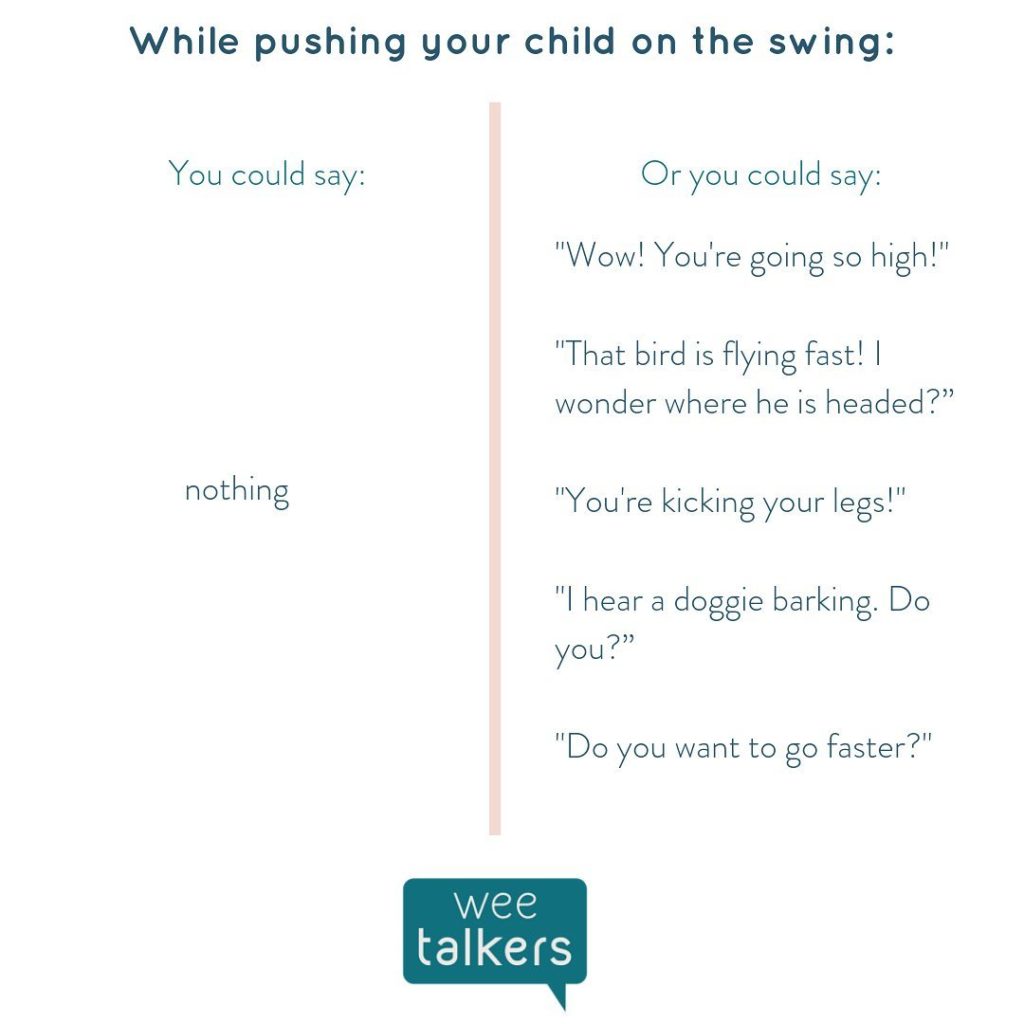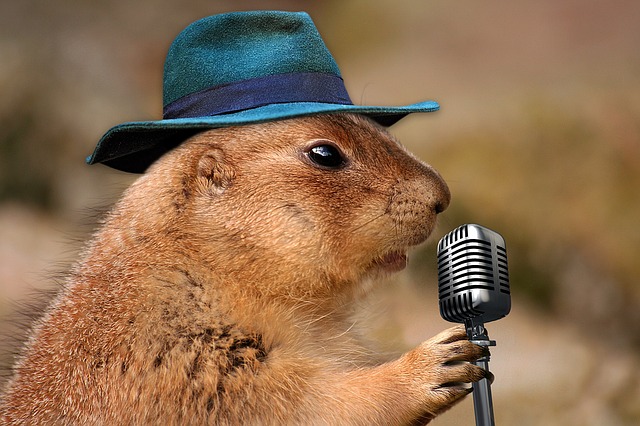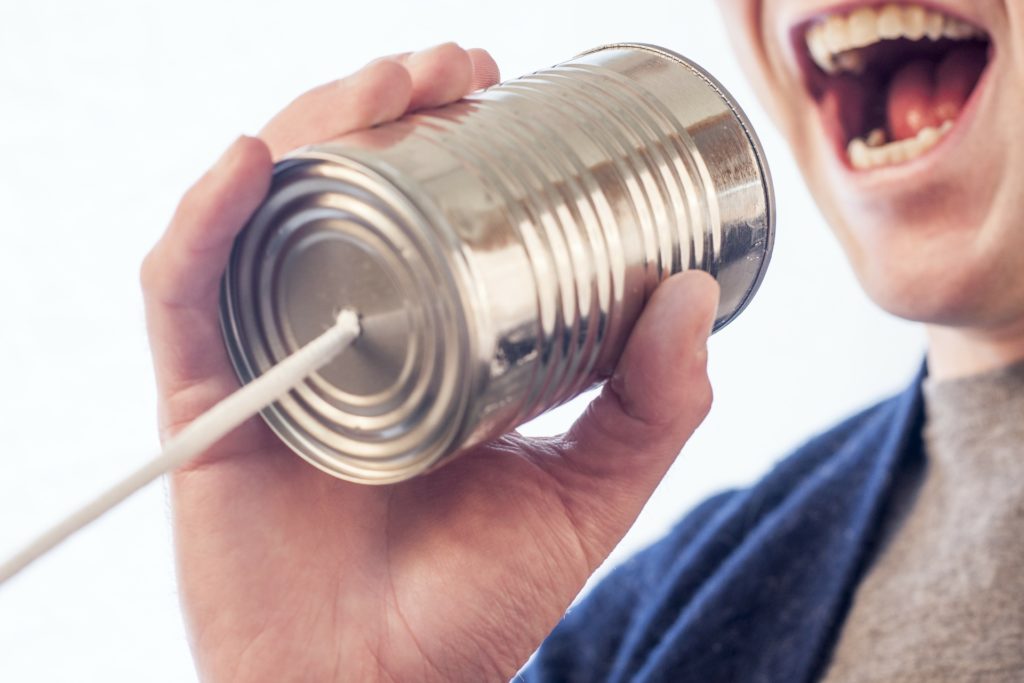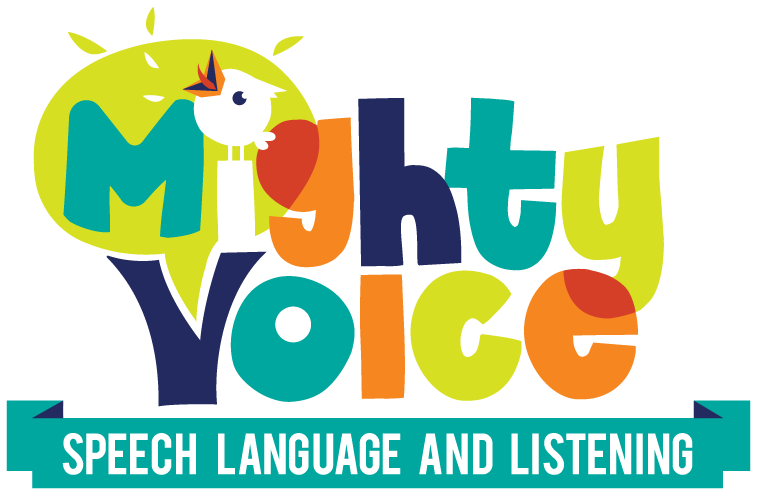If you’re a parent, you know the feeling…the ever present question or nagging thought, “Am I doing enough?” And if you’re the parent of a child with a hearing loss, that voice can be overwhelming because there can be so much you think you should be doing. So first, let me tell you, this post is not about what you’re missing or the things you aren’t doing.
Instead, this post is about seeing things through the lens of a speech language pathologist. One of the things about us is that we’re language nerds. Hardcore language nerds. My husband will attest to the fact that I recently asked him which term was more fun, “library” or “archive,” and he (rightly so) teased me since only language nerds could think the word “archive” might be fun.
And as language nerds, we are trained to see and capitalize on any opportunity to provide a rich language environment for kiddos. Which is why when I saw this Instagram post and this image from WeeTalkers, I realized how on point it is.

And it got me thinking, what other strategies can or do we use to create language rich environments for our kids, especially if your goal is listening and spoken language outcomes? Here are some of mine, and I’d love to hear your ideas on our Facebook or Instagram pages.

Sing It, No Matter How Silly
In our house, almost every little routine or activity has a silly song to go with it. And when I say silly, I mean, you have to get over yourself and be willing to look totally ridiculous if someone catches you. Here are some of the ones we sing often.
- Diaper changes (tune of Oh My Darling Clementine)-Change your diaper, change your diaper, change your diaper (child’s . Change your diaper, change your diaper, change your diaper (child’s name).
- Cleaning up toys-(Adapted from this Daniel Tiger song) Clean up, pick up, put away. Clean up, (child’s name).
- Brushing teeth-(Adapted from this Raffi song) When you _________ (some activity you did) you brush your teeth (ch ch ch ch, ch ch ch ch).
- Getting dressed-(tune of Oh My Darling Clementine) Get your (socks/shoes/shirt/hat/etc.) clothes on, get your clothes on, get your clothes on (child’s name). Get your clothes on, get your clothes on, and we’ll go on with our day.
You could certainly search the internet and find lots more songs, but if you want to keep it simple, pick one or two tunes and just change the words as you go. At first it feels awkward and strange, but as you and your child get used to it, it’ll become second nature.

Talk About Everything
I’ve seen this strategy for creating a rich language environment described in different ways. Sometimes people call it sportscasting, others describe it as being an announcer or newspaper reporter. Either way, the goal is the same–you are constantly talking about what’s going on. The Wee Talkers graphic above is a great example–instead of being silent as you’re pushing your child on the swing, you’re talking about what’s happening. If you’re not a natural talker this can feel forced at first, but as you do it, it becomes second nature.
If you’re struggling with how to get started, here are some ideas of types of things you can say
- Describe the order of events-In addition to providing rich language models, most kids like to know what’s coming anyway. If you’re changing diapers before leaving the house, you might say something like “Ok Katie, we’re going to go change your diaper and then we’re going to go to the grocery store.” Or if you’re at the store, you might say “We’re going to get some oranges first, then we need to look for the pasta.”
- Describe the actions you’re doing-If you’re cooking dinner, it might be something like “I’m cutting up the carrots. They need to be cut up small. Cut. Cut. Cut. Now they’re all cut and I’m going to throw the into the water to cook.”
- Describe how something looks/smells/feels/tastes/etc.-If you’re picking our clothes for the day, you might say something like “Ooh, let’s wear this red shirt. It’s really soft and fuzzy and looks very warm. It has a big fire truck on the front.” At snack time it might be “Mmm, this popcorn is yummy. I like how it crunches when I chew it.”
- Point out your child’s accomplishments and effort-I heard someone once say to never let anyone else be a bigger cheerleader for your child than you. And what better way to cheerlead for them than to point out their accomplishments and efforts. You could say things like “Wow, you climbed over a gigantic rock! That looked difficult” or “You worked very hard on putting that train engine together with the next train car.”

Encourage Your Child to Talk As Well with Open Ended Questions
We need to talk to our children, but we want to make sure we’re talking with them and not just at them. Open ended questions are one way to keep the conversation going while also giving them the opportunity to talk. Some of my favorites are:
- I wonder–Maybe while reading you ask “Hmm, I wonder why he’s doing that,” or if you’re looking at a seedling sprouting you might ask “I wonder what’s going to happen if we keep watering it”
- What do you think about ____? This can work well if you also give a comment first. Maybe something like “Hmm, I think that broccoli is yummy, what do you think about it? Or “I’m pretty confused about why the cat is sitting on top of you, what do you think?”
- Tell me more about _____. You could use this question to ask your child about a drawing or painting “Tell me more about your painting” or to ask about a situation “I saw you playing with Eric today, tell me more about what you did together.”
- How do you think_______? This question can be so good for talking about feelings or processes. You might be reading a book together and ask “How do you think that made the boy feel?” or if you’re watching a construction site ask “How do you think they built that?”
Read
You didn’t think I’d write a post about a rich language environment without reminding us all how powerful reading is, did you? It is definitely a soapbox of mine, and for good reason. I won’t go into all the details of why here, but here’s your reminder that reading with your child is one of the most powerful ways to build a language rich environment at home. If you haven’t yet, consider this your reminder to head over to your local library and check out some new books.
